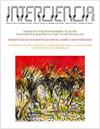海底管道管径优化与两相流压降:一种遗传算法
IF 0.4
4区 综合性期刊
Q4 ECOLOGY
引用次数: 0
摘要
石油、天然气和石化等行业在通过管道运输各种物质时遇到了多方面的挑战。该过程严重依赖于两相流,特别是在负责输送石油和天然气的海底管道的情况下。本文利用仿真软件对海底水平管道压力波动的复杂动力学进行了全面研究。然而,所使用的软件有其局限性,因为它没有考虑到经济因素。为了解决这一限制,采用了一种遗传算法,该算法包含了与初始投资有关的限制,从而有助于提高压降计算的成本效益。此外,在Baker模型中引入了一个新的参数,从而提高了技术效率和经济可行性。可以观察到,增加初始投资约束的权重会导致三度曲线下最佳管径的减小。此外,研究结果表明,水剪切增加4%,垂直管道内摩擦压降降低14.76%,水平管道内摩擦压降降低3.5%。相反,随着气油比的增大,垂直管道摩擦压降增加116.87%,水平管道摩擦压降增加81.69%。这些有价值的信息可以用来优化管道设计,并在这些行业中经常遇到的苛刻水下环境中进行操作。本文章由计算机程序翻译,如有差异,请以英文原文为准。
Pipe Diameter Optimization and Two-Phase Flow Pressure Drop in Seabed Pipelines: A Genetic Algorithm Approach
Industries such as oil, gas, and petrochemicals encounter a multifaceted challenge when it comes to the transportation of diverse substances through pipelines. The process relies heavily on two-phase flow, particularly in the case of seabed pipelines responsible for conveying oil and natural gas. In our study, the intricate dynamics of pressure fluctuations in horizontal seabed pipelines were comprehensively investigated through the use of simulation software. Nevertheless, the software employed had its limitations as it failed to account for economic considerations. To address this limitation, the integration of a genetic algorithm was undertaken, which encompassed constraints related to the initial investment, thereby contributing to the enhancement of cost-effectiveness in pressure drop calculations. Additionally, a novel parameter was introduced into the Baker model, leading to improvements in both technical efficiency and economic viability. It was observed that augmenting the weight of the initial investment constraint resulted in a reduction in the optimal pipeline diameter, following a third-degree curve. Furthermore, the research findings indicated that a 4% increase in water shear led to a 14.76% decrease in frictional pressure drop within vertical pipes and a 3.5% reduction in horizontal pipes. Conversely, as the gas-to-oil ratio was increased, frictional pressure drop surged by 116.87% in vertical pipes and 81.69% in horizontal pipes. This valuable information can be harnessed to optimize pipeline design and operations in the demanding underwater environments commonly encountered in these industries.
求助全文
通过发布文献求助,成功后即可免费获取论文全文。
去求助
来源期刊

Interciencia
综合性期刊-生态学
CiteScore
0.80
自引率
25.00%
发文量
1
审稿时长
4-8 weeks
期刊介绍:
Interciencia is the monthly multidisciplinary publication of the INTERCIENCIA Association. It is dedicated to stimulate scientific research, its humanitarian use and the study of its social context, specially in Latin America and the Caribbean and to promote communication between the scientific and technological communities of the Americas.
Interciencia has been published uninterruptedly since 1976. Its Founding Director, Marcel Roche (endocrinologist and sociologist of science) was editor until 2008, and thereafter Miguel Laufer (neurobiologist) has been in charge. It has been included since 1978 in the Science Citation Index and other international indexes, and since 2008 it maintains an open access electronic version with material from 2005 onwards.
The priority areas of the journal, without exclusion of other areas, are Agronomy, Arid Lands, Food and Nutrition, Biotechnology, Ecology and Environment, Energy, Innovation and Technology Transfer, Marine Resources, Non-renewable Resources, Science Education, Science Policy, Study and Sociology of Science, and Tropical Forests.
Interciencia publishes in Spanish, Portuguese and English research and review articles, communications and essays, all of which are subjected to peer review. Additionally, it includes non-refereed sections such as Editorial, Letters to the Editor, Open Town Hall, Book Reviews and Upcoming Events.
All the material submitted to the journal for publication and accepted by the Editorial Committee in view of its quality and pertinence is subjected to review by peer specialists in the corresponding fields of knowledge. Neither the INTERCIENCIA Association, nor the journal or the institutions to which the authors belong carry responsibility for the contents. Signing authors are responsible for the material published under their names.
 求助内容:
求助内容: 应助结果提醒方式:
应助结果提醒方式:


